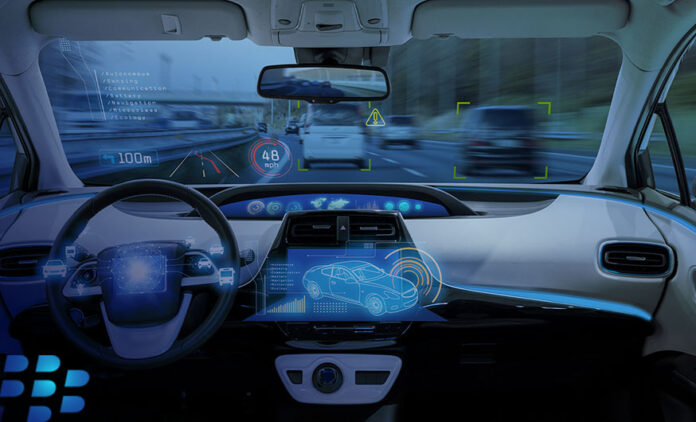The electric vehicle (EV) market in South Africa is projected to reach R612,922,375 in 2024 and the market is expected to expand at an annual growth rate of 16.93% between 2024 and 2028.
Many in the automotive industry will know that electric charging barely scratches the surface of automotive possibility in 2024. By 2030, around 95% of new vehicles sold globally will be connected. Software, personalisation, and automation will define the next era of auto.
“New in-vehicle experiences powered by tech will revolutionise how we and our cars interact with our environment in the coming years. However, to do this, automakers have some roadblocks to overcome when it comes to fostering public trust in these technologies, “ says John Wall, Senior Vice President and Head of QNX, BlackBerry.
So what does connected automotive look like in the year ahead?
Trust in the latest automotive technologies
As every part of our lives becomes more software-defined, our cars are no exception. The past decade of automotive developments has hinged on vehicle, driver, and sensor data, to increasingly sophisticated ends. Now, with our cars creating and sharing more data points than ever before, scrutiny increases. Fears of data breaches, reduced privacy, and the integrity of new connected insights like autonomous features have led to diminished trust in connected vehicles – just look at the recent recall of 2 million US Tesla vehicles. In which autonomous features failed to reach a level of quality in the public interest.
“In 2024, automakers must work together to build consumer trust in new vehicle enhancements. The tech industry must provide automotive OEMs with trusted IoT and cybersecurity systems, as well as keeping regulators and the public informed, resulting in a collaboration that restores the public’s faith in data sharing. So yes, we can trust in automotive technologies if automakers get it right,” Wall believes.
Technologies used to elevate vehicle design
Advanced, cloud-based digital twins are increasingly helping automakers not only to identify integration issues sooner in the development process but also to enable more developers to participate earlier in the development cycle, long before hardware is available. The cloud-based system helps manage project risk and foster collaboration among global development teams, so teams can include the best designers from anywhere in the world.
“The importance of creating a true-to-life virtual development environment for embedded software cannot be underestimated. Soon, virtual cockpit high performance compute (HPC) simulation will allow automotive companies to virtualise graphics, audio, and other inputs in the cloud, enabling earlier prototyping, scaling of developer teams, and a reduction in time-to-market. With this addition, in 2024, we’ll see the world’s first whole vehicle simulation,
“It will allow any automaker to accelerate the delivery of software and fully harness the cost, collaboration and time efficiencies of developing in a cloud environment. The true-to-life virtual development environment for embedded software will reduce complexity, accelerate innovation, and cut costs on in-car software development throughout the entire product lifecycle,” explains Wall.
How automotive IoT software will evolve in 2024
“Safe, secure, reliable systems will make upgrades seamless. Can you imagine technology that can judge how worn your tires are, personalise your in-car entertainment, message you if your teenagers are driving without seatbelts, score your driving for better insurance quotes, analyse incidents, pay for fuel without a bank card or phone, or ensure you’re alert while driving? Even if you can’t, automotive developers can, and using the latest operating systems can build exciting new capabilities for OEMs to update cars with additional products and revenue generating services,
“Taking advantage of today’s scalable, high-performance real-time operating systems (OS) enables embedded software design to support safe, secure, and reliable systems in a way that fully harnesses the benefits of CPU advancements way into the future. When in-car technology is based on these innovative systems, automakers can seamlessly upgrade the electrification, e-commerce, safety and security, vehicle lifecycle and operations, and the in-cabin experience in the electric, connected vehicles of the future – or even the one you already own,“ Wall says.
New playing fields for auto innovation to look out for
According to Wall, audio is one to watch! A sure-fire sign of quality, innovative audio is central to the software-defined vehicle. For instance, new software in the automotive market enables the decoupling of audio and acoustics software from vehicle hardware, giving audio designers and engineers complete creative freedom to deliver new and exciting in-vehicle sound experiences. It includes everything from basic audio functionalities such as hands-free telephony, sound alerts and active noise control as well as innovative new infotainment and safety features.
“In 2024, this software will not only provide more control over the quality and functionality of audio services, but it also unlocks new revenue streams from the activation of optional features. Upgrades to premium, branded quality, like on-demand or subscription services, bring new, value-add features into the vehicle. This innovation in audio will provide new business opportunities and exciting collaborations that will truly appeal to and excite the end user. Automakers who truly differentiate themselves through sound could well steal a march on competitors in 2024,” Wall concludes.

